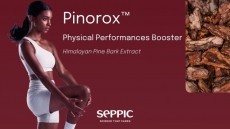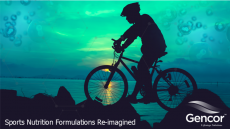Doping concerns: Researchers caution use of Chinese herbs that increase red blood cell production

This is based on their clinical trial involving healthy and active young adults.
Those who took the herbs Angelicae Sinensis Radix (dang-gui), Astragali Radix (huang-qi), and Salviae Miltiorrhizae Radix et Rhizoma, were found to have a significant increase in their reticulocyte percentage.
Reticulocyte percentage refers to the percentage of newly produced, relatively immature red blood cells in the body.
Measuring the reticulocyte percentage is relevant to how the World Anti-Doping Agency (WADA) detect doping in athletes. The Athlete Biological Passport (ABP) system by WADA seeks to uncover incidents of doping by monitoring biological markers, including measuring testosterone level and the athlete’s blood variables.
Writing in the International Journal of Environment Research and Public Health, researchers from Kaohsiung Medical University and I-Shou University, investigated the potential of Chinese herbal medicines (CHMs) in impacting blood variables.
“During the last decades, CHMs have been used as ergogenics in sports because scientific data showed that some herbs could potentially enhance muscle strength, improve aerobic endurance, reduce fatigue, or increase mental alertness.
“Nonetheless, CHMs have been less investigated concerning the adverse analytical findings in sports drug testing, possibly because of their complexity in chemical composition, source, and variety…Yet, concerns have been raised about their impact on the ABP haematological variables,” the researchers said, explaining the rationale of their research.
“Our knowledge regarding the containing of banned substances is still limited to a handful of CHMs such as steroids in deer musk pod, ephedrines in Ephedrae Herba, and higenamine in lotus plumule,” they said.
Study design
As such, the researchers conducted a six-arm parallel study over two weeks to find out whether CHM intake could alter blood variables.
The study involved 48 healthy and physically active adults in their 20s.
They were randomised into six groups taking CHMs commonly used for addressing anaemia.
For twice per day after meals, the participants received either a single herb of 1) Angelicae Sinensis Radix (Dang-gui,当归) or 2) Astragali Radix (huang-qi,黄芪) or 3) Salviae Miltiorrhizae Radix et Rhizoma (dan-can,丹参) or 4) Asini Corii Colla (donkey hide,阿胶) or 5) Spatholobi Caulis (Ji Xue Teng, 鸡血藤) or 6) a commonly prescribed formula Gui-Pi Tang (归脾汤).
Gui-Pi Tang contains various herbs, such as ginseng radix, longan arillus, and astragali radix.
The herbs are all in powder form and purchased from Sheng Chang Pharmaceutical Company from Taiwan.
Their blood variables were then measured at baseline, during intervention, and in the five weeks after the intervention has ceased.
Findings
A significant increase in the reticulocyte percentage was seen in the three groups receiving either Angelicae Sinensis Radix or Astragali Radix or Salviae Miltiorrhizae Radix et Rhizoma.
There was, however, no statistically significant change seen in other variables, including haemoglobin and Abnormal Blood Profile Score.
For those taking Angelicae Sinensis Radix, their reticulocyte percentage increased from the mean of 0.64 per cent from day one to 1.48 per cent on day 22 of the study.
The increase in reticulocyte percentage persisted even until day 29 of the study to reach 1.80 per cent.
Similar trends were seen in those taking Astragali Radix, with reticulocyte percentage going up from the mean of 0.69 per cent in day one to 1.53 per cent in day 22, and even higher at 1.85 per cent on day 29.
In those taking Salviae Miltiorrhizae Radix et Rhizoma, the changes in reticulocyte percentage has sustained for a longer time, with the value at 1.74 per cent at day 29 and shot up to 1.88 per cent on day 36.
As for the other three groups, although their reticulocyte percentage did change, the changes were not statistically significant.
“Our results show that the use of CHM may impact the ABP haematological variables.
“As CHM is considered a pivotal category of complementary and alternative medicine, we recommend that athletes, particularly those who have been registered in the testing pool, should be aware of taking specific Chinese herbal-based treatment or supplementation, and document any of its usage on the anti-doping forms,” the researchers concluded.
Source: International Journal of Environment Research and Public Health
Chinese Herbal Medicine Significantly Impacts the Haematological Variables of the Athlete Biological Passport
DOI: 10.3390/ijerph18189533
Authors: Chang, William Chih-Wei et al
















